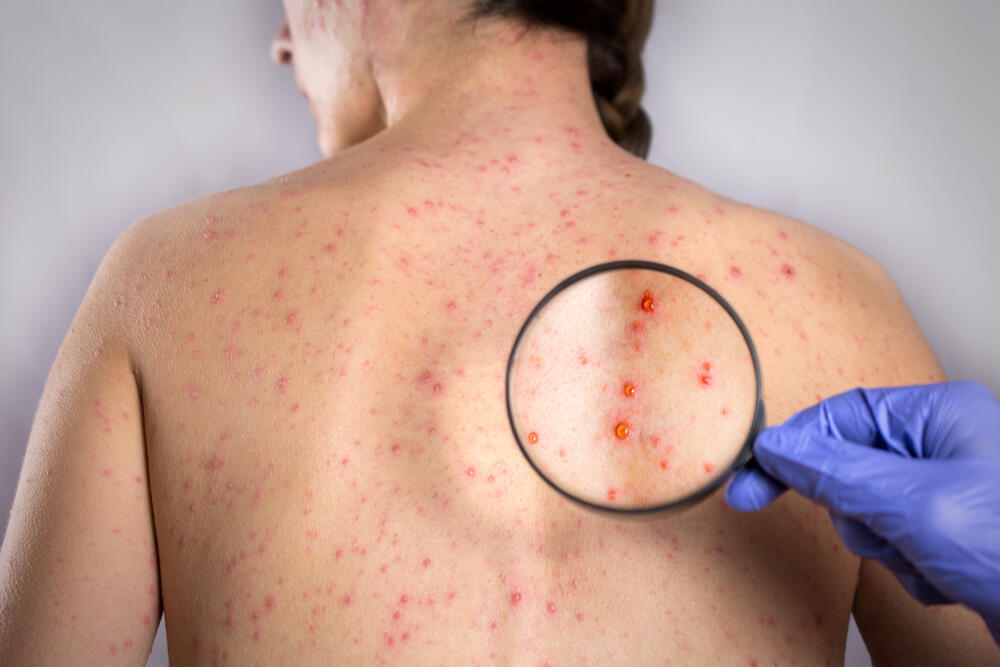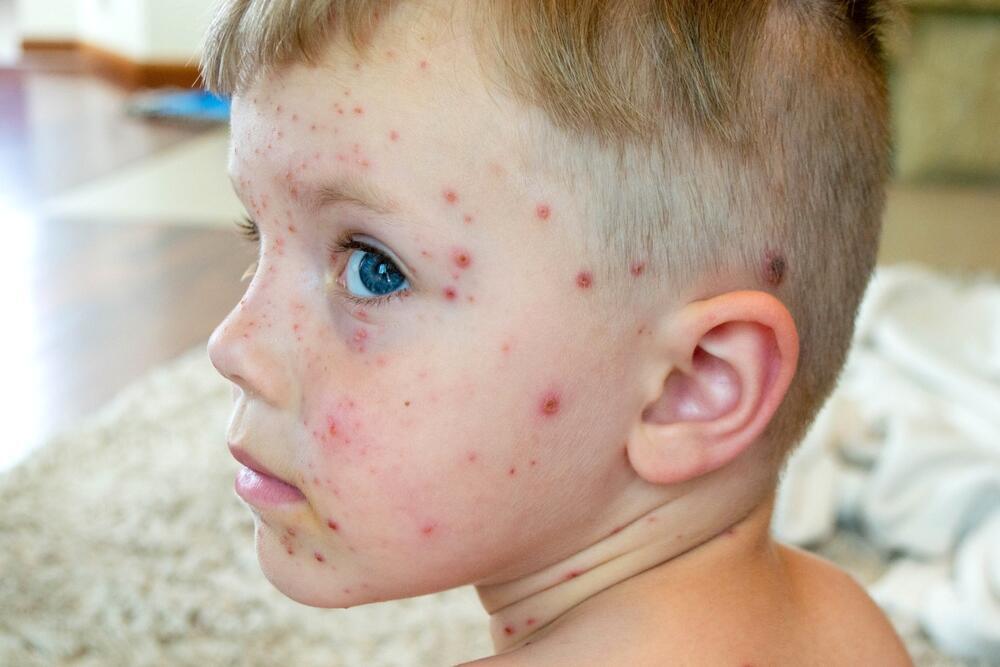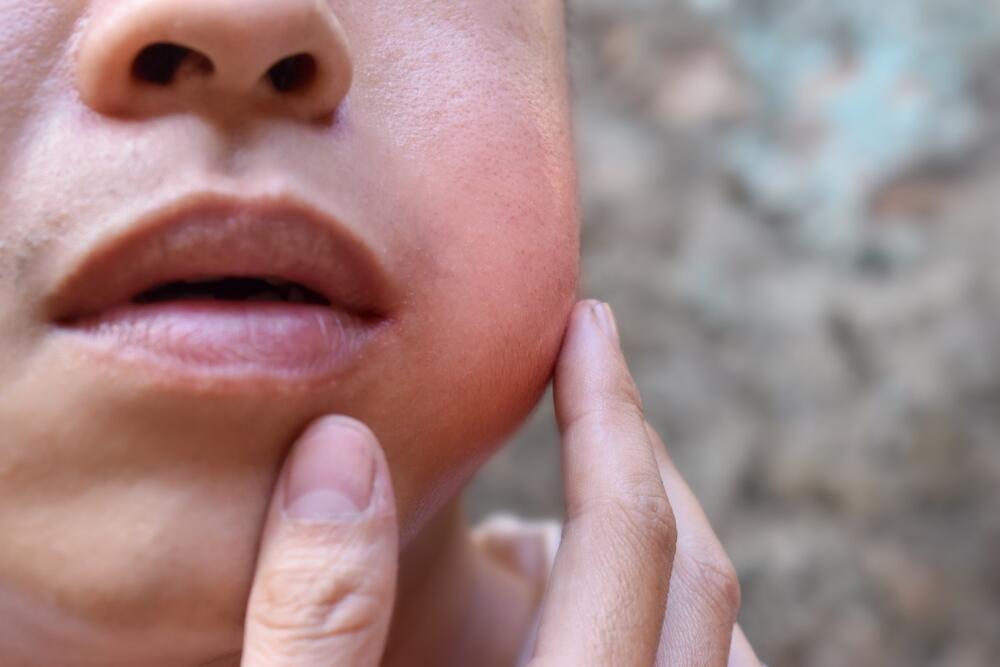The decline in public trust in the healthcare system, coupled with anti-vaxxers’ disinformation campaigns online, have influenced many parents who have started to worry about vaccinations, despite their proven efficacy and safety through rigorous research.
Read more:
The World Health Organization and the U.S. Centers for Disease Control and Prevention have been cautioned against this phenomenon in recent years.
Vaccinations are particularly important for children as they are often the primary link in the chain of transmission. Children infect other family members, who in turn infect others, including their colleagues at work and others in the public and private sphere.
So, which vaccines are administered in Israel? Here is everything you need to know about them.
Polio
The poliovirus is an enterovirus. Most people infected with the virus experience a mild and transient illness with symptoms such as fever, headache, sore throat, vomiting and diarrhea.
However, about 2% of those infected will suffer from muscle paralysis, which is usually irreversible. This paralysis can occur in any muscle in the body, including the limbs and respiratory muscles, and can lead to lifelong disability and even death.
Those patients may experience muscle atrophy years after the initial infection, known as post-polio syndrome. Between 1950-1954, there were 4,700 cases of polio in Israel, of whom 760 died. Following the introduction of the polio vaccine in 1957, the incidence of the disease significantly decreased. Since 1989, there have been no cases of polio in Israel, thanks to polio vaccination.
Haemophilus influenzae Type B
Prior to the development of the Haemophilus influenzae type B (Hib) vaccine, the bacterium was a leading cause of pneumonia, bloodstream infections and meningitis in infants and children. In the United States, approximately 20,000 individuals were affected each year, with two-thirds experiencing meningitis and one-third suffering from severe bloodstream infections, pneumonia or co-infections. One in every 200 American children under the age of five would contract the bacterium, resulting in 600 deaths annually from meningitis. Survivors often faced severe disabilities, including deafness or cognitive impairment.
Since the introduction of the vaccine in December 1987, infection rates have plummeted by 98 percent. Between 1994 and 1998, less than ten severe cases were reported. In 1994, the Haemophilus influenzae type B vaccine was included in Israel's routine immunization program. Consequently, the number of cases of meningitis caused by this bacterium has dropped from 200 per year to fewer than 10 cases annually.
Today, the disease is no longer seen in the medical community, and even new pediatricians are unfamiliar with it. The vaccine is part of the routine vaccination schedule and provides long-lasting protection.
Pertussis
Pertussis, commonly known as whooping cough, causes significant suffering and severe coughing fits in both children and adults. However, it poses a particularly dangerous and life-threatening risk for infants. Before the era of pertussis vaccination, nearly all children would contract the disease. In the United States, the number of reported cases ranged from 150,000 to 260,000 per year, with 9,000 resulting in fatalities.
Pertussis is caused by the bacterium Bordetella pertussis, which leads to the disease characterized by severe coughing fits, accompanied by gasping for air and a choking sensation. The illness can persist for several months. Antibiotic treatment with medications from the macrolide family, such as "macrolides," does not cure the disease but prevents its spread from the infected person to those around them. In infants, pertussis could be life-threatening.
The pertussis vaccine, administered as part of the routine immunization schedule, provides protection for 5 to 10 years. The vaccine can also be given to pregnant women, as the antibodies generated in the mother's body pass to the developing fetus and protect them during the critical early months when the disease is considered life-threatening. Some experts now recommend that expectant fathers also receive the vaccine to boost their immune defense and prevent transmission to the vulnerable newborn.
Dr. Erez Garti, an immunologist from the Davidson Institute of Science Education, adds, "This vaccine has been administered for many years since the early 1990s to young children up to one year old, followed by two booster doses in grades 2 and 3. However, vaccine immunity does not persist, and although the disease is less dangerous for adults, when a woman becomes pregnant, it is important for her to be vaccinated in the early weeks of pregnancy to protect the fetus. The vaccine essentially reminds the immune system whom it 'needs to fight’."
"It is a classic vaccine composed of a collection of proteins. It is a very safe vaccine that was developed in the early 1980s and has been given to millions of people. The vaccine given to women is also safe and has been extensively tested on tens of thousands of women. It is important to understand that one of the problems with pertussis is that it is highly contagious, and while it is not very dangerous for adults and can even go unnoticed with minimal symptoms, it can be dangerous and potentially fatal for children and infants."
The vaccine for pregnant women is administered between weeks 27 and 36 of pregnancy at the nursing clinics in all healthcare facilities. Prof. Tal Biran-Shental, Director of the Women and Maternity Department at the Meir Medical Center in Kfar Saba and Chairperson of the Israeli Society of Maternal-Fetal Medicine, emphasizes that the pertussis vaccine is the best defense against the disease.
"The vaccine is not dangerous, it is included in Israel's health basket, and it is recommended by all professional associations in the Western world and in Israel," she says. "During each pregnancy, revaccination is necessary to protect the unborn baby. It is a simple and safe vaccine that provides the only protection we can give to infants against severe and dangerous disease."
Rubella
While rubella is mild in children and adults, over 90 percent of infants born to mothers who were infected with rubella during the first trimester of pregnancy will suffer from congenital rubella syndrome, which can cause heart defects, cataracts, cognitive impairment and deafness.
In the 1970s, rubella was one of the most common viral diseases in Israel, and in 1972, the number of cases reached a peak of 30,000 patients. Starting from 1973, the vaccine was included in the routine childhood immunization program.
Since 1994, two doses of the vaccine have been recommended for every child. From that year, the number of cases decreased to less than 10 per year. There have been no reported cases of congenital rubella in Israel since 1993.
If rubella vaccinations were to cease, immunity to the disease would decline, and it would return, infecting pregnant women who would give birth to infants suffering from congenital rubella syndrome. This would result in tens of thousands of cases of deafness, cognitive impairment, blindness, or death in every country.
Measles
Measles is a severe infectious disease characterized by cough, runny nose, high fever, typical rash, mouth sores, and inflammation of the eye membrane. After an incubation period lasting from eight to 12 days from the moment of infection, during which the virus spreads in the body, the first stage (prodrome) begins, causing a rise in temperature, eye inflammation, sensitivity to light (photophobia), runny nose, and cough.
In 70-50 percent of patients, red-blue spots will appear on the inner part of the cheeks and in the mouth. These unique spots for the disease are called "Koplik's spots." These spots can spread to the lips, gums, palate, eyelids and throat. The rash starts around the forehead, near the hairline, behind the ears, and on the neck, and spreads downward towards the chest, abdomen, and legs, extending to the ankles. Within about a week, the rash fades, but the cough may persist for up to ten days. In severe cases, swollen lymph nodes may appear.
Children under the age of 5 or adults over the age of 20 are at risk of life-threatening complications if they become infected and develop the disease. The main cause of death from the disease is pneumonia, resulting from bacteria attacking the lungs and causing a secondary infection.
The most deadly complication is a condition called subacute sclerosing panencephalitis (SSPE), a chronic inflammation of the brain that almost always leads to death. This inflammation occurs between 7 and 13 years after infection, after the virus undergoes an unclear process that turns it especially aggressive, causing destruction of brain cells and death in all patients.
Currently, there is no specific treatment for measles. Antibiotics only work against bacteria and do not have any effect on the measles virus. Antiviral treatments (similar to those used for herpes or AIDS) have been found to be ineffective. The only available treatment is supportive care, including fluid hydration and management of disease complications. Hence, the main focus is on preventing severe cases of the disease.
The vaccination against measles, mumps, and rubella, known as the MMR vaccine, is part of routine immunizations given in early childhood. The vaccine is administered via subcutaneous injection in two doses: the first at one year of age and the second at six years of age. The vaccine is completely safe and may cause a mild increase in body temperature for six to twelve days after vaccination, sometimes accompanied by a mild rash that disappears. According to current knowledge, the measles vaccine, given in two doses, provides protection against the disease for decades.
Chickenpox
Until 2008, chickenpox was one of the most dangerous diseases, causing a high rate of complications, including meningitis and death. The mortality rate at that time stood at 1 per 100,000 infected individuals. However, with the introduction of the chickenpox vaccine into routine immunizations in Israel that same year, the disease became one of the milder ones. From around 500 body rashes, some of which were contaminated, the disease now only causes about 20 rashes, without complications.
However, vaccine resistance has begun to increase the incidence rate again. In 2012, 1,492 cases of chickenpox were reported, and in 2015, the number of patients rose to 1,795 cases. In 2016, there were 2,398 reported cases of chickenpox. The actual number of cases is likely much higher, as only a portion of the cases are reported to the Ministry of Health. In the past two years, there has been a slight decline in the number of infections.
The varicella virus, which causes chickenpox, is transmitted like most viruses, through saliva droplets or direct contact with wounds. The vaccine is currently administered as part of routine immunizations in early childhood, providing protection for about 10 years, mainly against the complications of the disease. Even if a child becomes infected with the varicella virus, they will experience a very mild and non-life-threatening illness that resolves on its own.
Tetanus
Tetanus is one of the deadliest diseases. The bacterium Clostridium tetani is widespread in soil, dust, and even animal feces. The bacteria are highly resistant to heat and disinfectants. From 1922 to 1926, there were reported 1,314 cases of tetanus per year in the United States. In the late 1940s, the first anti-tetanus vaccine was introduced, and the disease began to decline. Towards the end of the 1990s, only 45 cases of tetanus were reported in the United States.
The disease is caused by an injury from objects such as nails or glass, or even animal bites, leading to muscle stiffness and contractions. The jaw locks, resulting in choking, muscle spasms, fractures, and unconsciousness. Approximately 30% of patients die. There is no cure for the disease, and the only way to prevent it is through vaccination.
The vaccine is given to children through a milk drop and at school. It is also administered to those who have not been vaccinated in the past five years and have suffered a deep puncture wound or burn. The vaccine should be administered within 48 hours of the injury. It is known to provide protection for 5 to 10 years.
Mumps
Before the era of vaccinations, mumps was one of the main causes of deafness in children, with one in every 20,000 cases resulting in hearing loss. Mumps is mostly a mild viral disease, but in certain cases, it can lead to orchitis and infertility, inflammation of the brain and nervous system, meningitis, seizures, and brain damage. In pregnant women, the virus can also cause miscarriages.
In 1964, there were reported 212,000 cases of mumps in the United States. After the introduction of the mumps vaccine in 1967, the incidence of the disease dramatically decreased, with only 606 reported cases in 1998. The mumps vaccine is part of routine immunizations given in childhood and provides long-term protection.
Diphtheria
Diphtheria, caused by the bacterium Corynebacterium diphtheriae, is an extremely severe disease. The bacteria "settle" in the throat, tonsils, nose, and primarily in the pharynx. A visible open wound is formed, where dead cells accumulate, resembling a grayish membrane. Inflammation and swelling around the membrane can cause suffocation.
The bacteria release a toxin that affects the heart muscle and brain. The entire process is accompanied by severe sore throat and high fever. The bacteria are transmitted from person to person through dispersal of the bacteria into the environment during coughing, sneezing, or contact with nasal secretions and saliva. The risk for an unvaccinated individual to fall ill after exposure to the bacteria is very high. The mortality rate from the disease is high.
In the 1920s, diphtheria was one of the main causes of death in children. With the introduction of the diphtheria vaccine in 1923, the incidence of infection significantly decreased. In recent years, the disease has almost disappeared from the Western world. However, in 1952, 2,500 cases of diphtheria were reported in Israel. Since the introduction of the vaccine in the 1950s, the incidence of the disease has significantly declined, with the last reported case of diphtheria in Israel occurring in 2000.
Although diphtheria is rare in Western countries, it still poses a threat. The disease is common in third-world countries where routine vaccination programs are not implemented. Travelers from all over the world visit these countries, and they can easily spread the bacteria. Without vaccination, the disease can resurge and cause thousands of deaths each year. The vaccine is administered as part of routine immunizations given in childhood through a milk drop or injection, and it provides protection for approximately 10 years.
Hepatitis B
Over 2 billion people worldwide are affected by the hepatitis B virus, of which 350 million will remain carriers capable of infecting others through sexual contact or blood contact. Millions of them will die each year from liver diseases and liver cancer.
In Israel, there are more than 210,000 patients living with hepatitis B. Since 1992, routine vaccination against the virus has been conducted in Israel. Before the use of the vaccine, many children would become infected each year from a parent or another household member during their early years. About 90% of those infected with the virus below the age of one are at increased risk of developing chronic liver disease.
The hepatitis B vaccine, administered soon after birth and during childhood, has significantly reduced the rates of infection and complications. Vaccination at an early age is particularly important because infants who become infected with the virus are at the highest risk of severe disease in adulthood and increased risk of death. The hepatitis B vaccine is given in three doses during visits to healthcare providers and also during enlistment in the Israel Defense Forces. The vaccine provides protection for approximately 5 to 7 years.
Pneumococcus
The bacterium causes pneumonia and bloodstream infections. There are many strains of the bacterium, some of which are covered by the vaccine. It is administered as an injection to infants as part of routine immunizations, to high-risk populations, and to adults over the age of 65. In the United States, the vaccine is also given to smokers over the age of 19 due to their increased risk of severe lung inflammation. The vaccine is known to provide protection for approximately 10 years.
Meningococcus
The dangerous bacterium Neisseria meningitidis (which has multiple strains, with strain B being the most common in Israel) causes a highly lethal disease that can lead to inflammation of the brain lining in infants and children, bloodstream infections, and death. Strains A, C, Y, and W139 primarily affect young people and adults. The vaccine is administered as a subcutaneous injection to soldiers during enlistment against these strains. Two years ago, a vaccine against strain B was approved in Israel, targeting infants and children. The vaccine is not included in the standard drug basket but is subsidized by health funds. The vaccine provides protection for 3 to 5 years, so additional doses are necessary for further protection.










